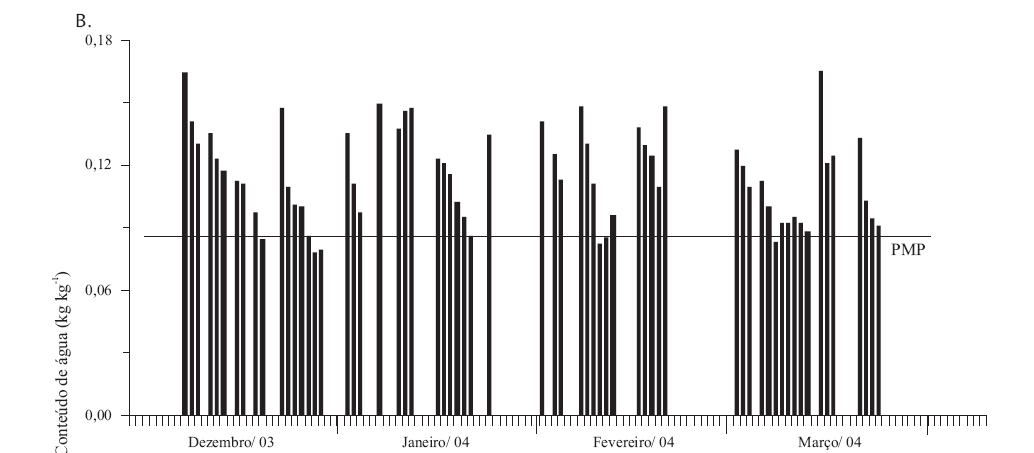The objective of this study was to determine the optimal water interval and its relationship with soybean yield. For this study, an experiment was carried out in Jaboticabal, São Paulo State, Brazil, in a Haplustox medium textured soil. The experimental design consisted of a completely randomized with subdivided plots (six compaction levels and four soybean cultivars), with four replications. The soil compaction levels were: T0 = 0, T1* = 1, T1 = 1, T2 = 2, T4 = 4 and T6 = 6 strides of a 11 ton tractor, on the same place, side by side on soil surface. In T1* the compaction occurred when the soil was dry. In December, 2003 the soybean (Glycine max), cultivars IAC Foscarin 31, MG/BR 46 (Conquista), BRS/MG 68 (Vencedora) and IAC 8 - 2 were sown. After sowing, indeformed soil samples were collected in layers of 0.03-0.06, 0.08-0.11, 0.15-0.18 and 0.22-0.25 m for determination of soil water content and resistance to penetration curve and the optimal water content. According to model, the critical soil bulk density (Dsc) for soybean yield varied between cultivars from 1.56 to 1.64 Mg m-3. The soil bulk density at which the yield of soybean cultivars decreased was greater than the Dsc.
physical attributes; water content; Glycine max







